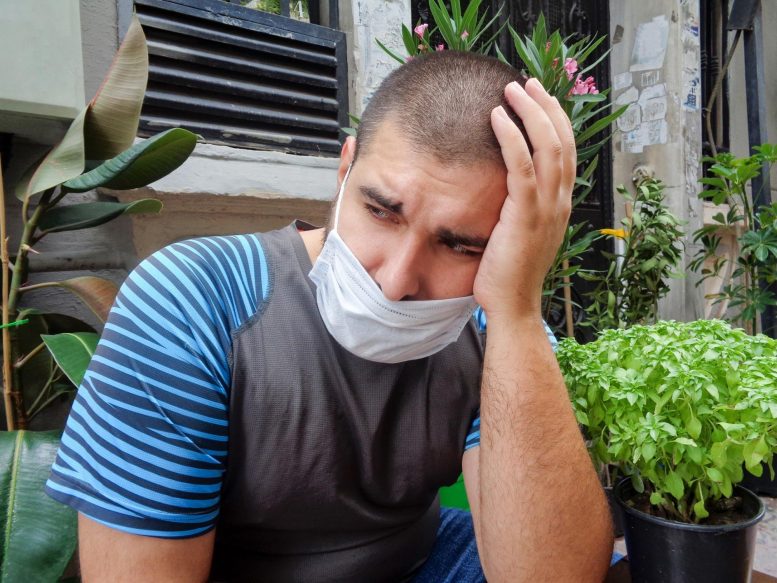
A new study shows the early lockdowns implemented in the first six months of the COVID-19 pandemic saved lives. However, the decision to use lockdowns is much more nuanced and the research shouldn’t be used to justify lockdowns now or to retroactively endorse that approach.
Lockdowns during the early pandemic saved lives, but it’s not a go-to strategy moving forward.
Research shows early COVID-19 lockdowns saved lives but had a nuanced impact on life quality, disproportionately affecting younger workers and should not be used to justify ongoing or future lockdowns.
The U.S. pandemic lockdown in 2020 caused a $2.3 trillion economic downturn and split the nation politically, and now some European nations are locking down again as Omicron surges through the global population.
But do these drastic measures save lives? Are they worth massive job and income losses?
Many of the people saved from the pandemic lockdowns were high-risk older adults with multiple illnesses and fewer healthy years left to live, while those most impacted by the economy were younger people in service jobs and other lower-paying occupations.
A new University of Michigan-led study shows the early lockdowns implemented in the first six months of the COVID-19 pandemic saved lives–but the decision to use lockdowns is much more nuanced and the research shouldn’t be used to justify lockdowns now or to retroactively endorse that approach, said health economist Olga Yakusheva, associate professor at the U-M School of Nursing.
The study found that from March through August 2020, implementing widespread lockdowns and other mitigation in the United States potentially saved more lives (866,350 to 1,711,150) that the number of lives potentially lost (57,922 to 245,055) that were attributable to the economic downturn.
Nuanced Impact on Different Populations
However, the results are more ambiguous when looking at the quality-adjusted life expectancy added by lockdown (4,886,214 to 9,650,886) vs. quality-adjusted life years lost (2,093,811 to 8,858,444) due to the economic downturn.
This is because many of the people saved were high-risk older adults with multiple illnesses and fewer healthy years left to live, while those most impacted by the economy were younger people in service jobs and other lower-paying occupations who found themselves without employer-provided health insurance and, in many cases, unable to pay for health care or even life-saving medications. A quality adjusted life year is one year of life in perfect health.
Reevaluation of Lockdown Measures
The study, published in PLOS One, should not be used to justify more lockdown measures, Yakusheva said. Nor is it a retroactive endorsement of the strict economic lockdown approach the U.S. imposed during the first six months of the pandemic.
“We evaluated the full packet of public health measures as it was implemented in the beginning of the pandemic, but lesser mitigation measures may have worked just as well to reduce lives lost,” Yakusheva said. “The fact is, we just will never know. At the time, we had to work with the information that we had. We knew the pandemic was deadly, and we did not have therapeutics or a vaccine.”
The situation has changed dramatically since the pandemic began, and we have more tools to battle the virus, Yakusheva said. Vaccines and therapeutics are available, as are other mitigation measures.
This is the first known paper to measure the effect of pandemic lockdown mitigation measures on lives saved and lost, as opposed to typical economic evaluations, which examine the cost per life saved, she said.
Subjective Perspectives on Public Health Measures
“This is tough for people to agree upon. Typically, people are in one of two camps—pragmatics who worry about the economy and ethicists who say any amount of money is worth saving a life,” Yakusheva said. “Some value loved ones more, or their own lives. It’s very subjective.
“What we did was look at empirical correlations between loss of income and mortality, and created a range of estimates on how many people could be expected to die as a result of the downturn, which is essentially the estimated collateral damage of the public health measures. What our analysis did was to allow us an apples-to-apples comparison of lives saved vs. lives lost.”
Study Limitations and Future Considerations
There are important study limitations. Chief among them are that some answers to major questions were unobserved–for instance, how many lives would have been lost had COVID-19 been unmitigated. In other words, if it had just run its course with no public health measures in place.
“We know how many people died with public health measures in place, but we can’t know how many people would have died without those measures in place,” Yakusheva said.
The team estimated that number based on published literature, and the accuracy of that literature, or the public’s behavior, could lead to an over or underestimate. Also, all of the human toll of the lockdown won’t be seen immediately. For example, the health toll could manifest later as disease progression because someone who was unemployed couldn’t buy medications.
“We tried to be very careful and produced a range of numbers of lives potentially saved and lost, and we hope the true numbers lie within those ranges,” Yakusheva said.
Reference: “Lives Saved and Lost in the First Six Months of the U.S. COVID-19 Pandemic: A Retrospective Cost-Benefit Analysis” by Olga Yakusheva, Eline van den Broek-Altenburg, Gayle Brekke and Adam Atherly, 21 January 2022, PLoS ONE.
DOI: 10.1371/journal.pone.0261759









“… ethicists who say any amount of money is worth saving a life,”
Hippocratic Oath: “First do no harm”
Dr. Robert Malone on posted irrefutable proof of the Ivermectin success story in India. Ivermectin needs to be allowed for medical use and for doctors to prescribe it immediately in United States. It is an act of criminal malfeasance to keep up the sham in the face of overwhelming proof and overwhelming harm to the people of this nation. If you want you can get it from https://ivmcures.com
The story about India, a country where cattle roam everywhere, and hygiene is less than desirable, is a story about a country where those with weak immune systems were removed from the gene pool before SAR-COV-2 arrived.
What you call “irrefutable proof,” I would call anecdotal evidence, at best. I don’t think that you know what is required to establish medical proof for the efficacy of a treatment protocol. However, maybe you don’t care and are only here to try to sell something of dubious value to gullible readers.
Since the dominant causes of death were listed as not being able to afford health care or life saving medications, I think that the real lesson in this study is that the US seriously needs a nationalized/Medicare for all style health care system.